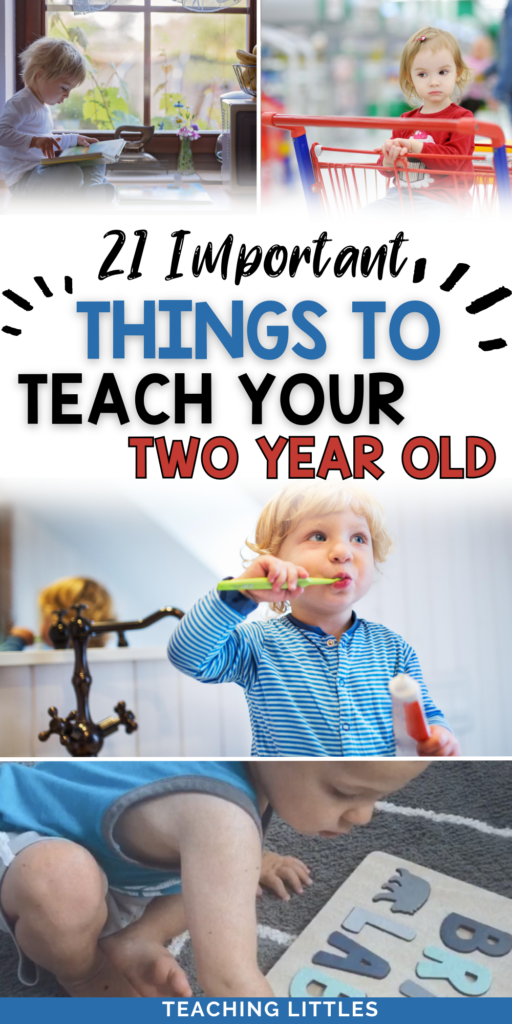At this age, children are like little sponges, picking up every bit of information about the world around them. The majority of things that your two year old learns will be through play and normal social interaction.
Everyday occurrences can provide numerous learning activities for your two year old. However, there are plenty of everyday skills and tasks that you can start teaching your toddler.
Being at home with two toddlers for awhile and just trying to make it to nap time, I realized that maybe I wasn’t teaching them enough. Between meal times, clean up, and just trying to prevent any bodily injuries, actual learning can seem to fall on the back burner.
This post may contain affiliate links which I would receive a small commission should you make a purchase.
Two Year Olds Can Learn Through Play Activities
As a pediatric occupational therapist, I know that children can learn a significant amount of knowledge through their everyday play.
Toys and gadgets may be teaching them things like cause-and-effect, problem solving, and new language. They’ll also be developing key skills like hand-eye coordination and independence.
Both structured and unstructured play are important to develop these necessary skills. Most of what they learn, you won’t even realize that you’re teaching them!
However, if you’re not in the education field, you may be unsure of simple ways to teach your two year old or ways to incorporate new learning into everyday activities.
What You Can Teach Your Two Year Old
Below are a bunch of skills and concepts that you can help your 2-year-old to understand. Practice and exposure is the best way to develop new skills with your child.
Below is a list of learning activities for two year olds for the whole range up to 3. Not exclusively once they turn two.
Always remember that every child develops at their own pace so don’t worry too much if your child doesn’t know all of these concepts yet. This isn’t a list of what they should know at this point, but rather a guide to help you understand what they may be capable of learning at this age.
1. NEW WORDS AND CONVERSATIONAL SPEECH
Your 2-year-old should have gained a slew of new vocabulary words in the past year. Now they’re learning how to put these words together to form 2-3 word phrases, short sentences, and questions. Here are some of the common words, phrases, and concepts that your two year old may be able to say and understand:
- Action words to help them communicate (more, go, come, want, up, down, etc.)
- Manners (please, thank you)
- Names of body parts
- Animal sounds and names of animals
- Names (their own first and last name, and names of family and friends)
- Vehicles (cars, trucks, firetruck, airplane)
- Household objects (names of certain food, utensils, furniture, clothing, etc that they use daily)
- Colors and Shapes
- Sizes (big, small, tall, short)
- Direction words (below, above, next to, on top, underneath, etc. although this may still develop more later)
- Weather (sunny, rainy, cloudy, windy, snowy, hot, cold, etc.)
Before they turn 3, they should have a pretty extensive vocabulary. If your child has several words, help them to group words together if they’re not doing so on their own. For example, if your child says “more,” repeat after them, “more Cheerios?” and have them repeat the two words together. If they say, “want water,” repeat after them, “I want water?” and have them repeat that as well.
Adding on words to their current vocabulary will help them speak in longer phrases and sentences.
If your child is not continuing to gain more words throughout the past few months, consult your pediatrician. Here are more tips to get your toddler to talk here.
2. READING BOOKS

At 2, your child should definitely get the concept of “reading” a book. Of course, they won’t actually be reading the words, but they will most likely grab a book and snuggle in the corner of the couch to flip through the pages.
Make sure they understand how to read the book from front cover to back cover and the right way to hold it. They will simply look at the pictures at this age, but as they get later in their 2’s, they’ll start to recognize that there are letters and words on the page that actually mean something.
When you are reading to them, be sure to use your finger to follow along with the words on the page so they start to associate the letters with what you’re saying. At this point, you can stop making up your own words or just describing the pictures on the page and actually read word-for-word. This way, your toddler will get the concept that a story is being told.
Have your toddler describe the pictures to you and you can even ask them questions about the pictures or the words that you just read. Questions like, “What color is the girl’s dress” or “Which one is bigger, the lion or the snail?” are appropriate at this age.
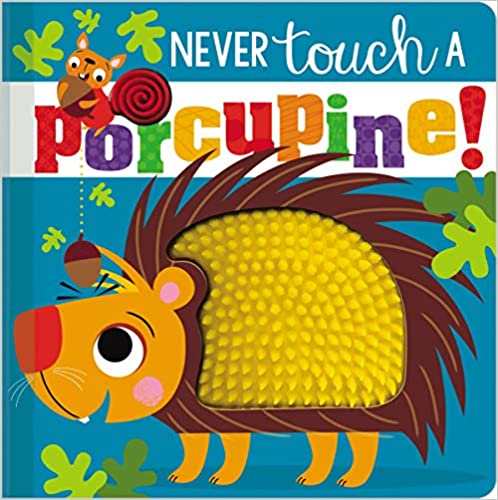
They’ll still benefit most from board books where they can easily turn the pages, but may start exploring books with thinner pages. Some favorite types of books around 2 years old are Lift-The-Flap Books, Touch-and-Feel Books, and Play-A-Sound Books.
They’ll love books with lots of pictures, their favorite characters and objects, or silly books. Check out my list of the Best Books for 2 Year Olds here.
Related Post: The Outstanding Benefits of Reading to Babies and Toddlers
3. PROMOTE INDEPENDENCE
Your two-year-old is probably begging to do things on their own so give them these opportunities to learn, understand, and make mistakes (within limits, of course).
Of course they may not have perfected the skill yet, but the only way a child will learn these new skills is by doing it by themselves. You can help them to complete the task once they’ve already tried it on their own.
They should be increasing their independence in areas like:
- Dressing: choosing their own clothes, taking on/off shirt/pants with help, underpants/pull-up with help, shoes, and socks, and even learning the right way to put on items (backwards or forwards)
- Feeding: using utensils with some spills, choosing their meals and snacks, opening containers, drinking from a straw cup regularly, and practicing with an open cup with supervision. I love these OXO utensils for 2 year olds as they have a good gripper and can really pierce the food, but if your toddler wants to be even more like mom and dad, these ones are great toddler utensils also.
- Brushing teeth and hair: Teach them how to brush back and forth on their own and using a cup to rinse. My toddlers LOVE using an electric toothbrush like this one, especially the ones with their favorite characters.
- Cleaning up: wiping up messes, putting toys away, bringing dishes, cups, & utensils to the sink when done, throwing away their garbage, and using a handheld vacuum to clean
- Hygeine: Blowing their nose, washing their hands, using a washcloth to wash themselves in the tub. Make washing hands and standing at the sink much easier by using stools and sink faucet extenders.
- Transitions: Getting in and out of the car on their own, going up and down the stairs, ending one activity and moving to the next without complaining, turning on/off lights when entering/leaving the room
Be sure to model and show your childhood to do these skills the right way so that they don’t keep practicing something the wrong way.
4. PRETEND PLAY

Using their imagination opens up a world of fun and play for your toddler. This skill typically comes naturally as they copy and imitate what they see in the real world, in books, or on tv. They will use a combination of imagination and reality to copy the things they see daily, like these:
- Cooking in a play kitchen with pots and pans
- Hosting a tea party for their dolls and stuffed animals
- Feeding, burping, and changing a baby doll with play spoons, bottles, and diapers
- Talking on the phone with a play cell phone
- Playing doctor with a doctor or nurses kit
- Going shopping with a shopping cart and fake food
- Driving a car
- Sweeping, mopping, and vacuuming the floor
5. DRAWING AND COLORING
These are great fine motor learning activities for 2-year-olds. At this point, they should have moved past scribbling and be able to make some intentional marks on the paper, including a straight line down, straight line across, and maybe even attempt a circle. Of course, these may not be perfect, but they should get the concept of making intentional marks.
They’ll love coloring pictures, but getting them used to making marks will help improve their drawing and writing down the road. Print out pictures of their favorite characters or get a coloring book from their favorite tv show.
Also, you can draw or print out pages with letters so they can trace and get familiar with the alphabet.
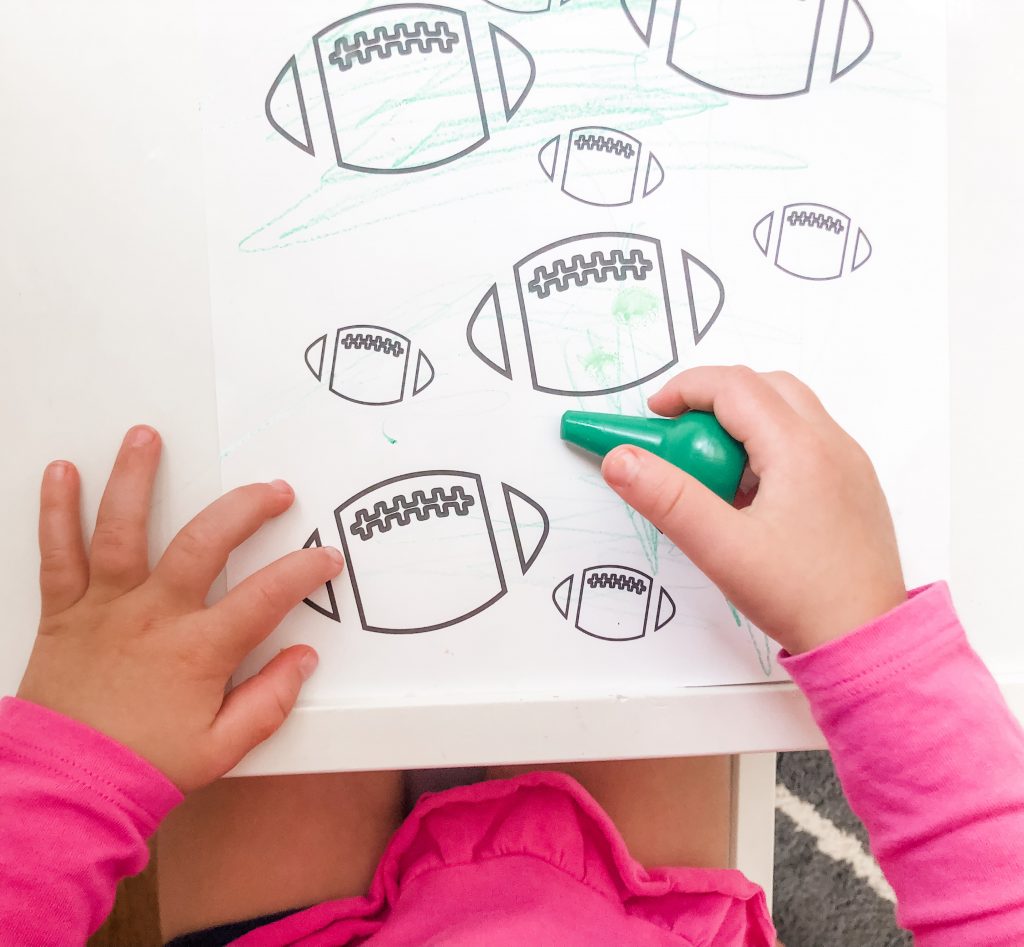
I highly suggest these finger crayons for the young ones. They are perfect for little hands and promote a good grasp when holding the crayons.
If you’ve already started using markers, you have probably discovered that toddlers and markers aren’t a good match (unless you want a mural on your wall), so these Crayola Mess-Free Coloring Sheets are my absolute favorites!

The markers come out clear if they are used on any other surface besides the paper. On these special sheets, they’ll turn a color so your toddler sees the masterpiece that they are creating. They have so many characters available so I’m sure you can find a pack that your child will love.
6. NUMBERS AND COUNTING
Your 2 year old may be able to count to 10 (with some errors at times) from memory and maybe even higher with more practice. They can also work on recognizing and identifying those numbers and counting objects.
You can practice counting with so many different, everyday objects:
- count each step while you’re walking up the stairs
- count the number of French fries on their dinner plate
- count the number of toys in their bin
Numbers are everywhere so be sure that they are counting whenever they can.
The concept of one-to-one correspondence (one object is one number) comes later, but many toddlers can get the idea early on. Just show them how to point to each object as they count it and correct them if they start saying 2 numbers as they count one object or skip over objects when counting.
Related Post: 19 Activities to Introduce Counting to Your Toddler
7. LETTERS AND SOUNDS
Your child may already know many of the letters of the alphabet. They may be able to recite the ABC’s from memory (with some errors and help as needed). Now you can work on recognizing letters, as well as the sounds they make.
When talking about a letter, for example M: say M says mmm for mom. Always have them repeat you to etch it into their memory.
Be sure to have your child look at both uppercase and lowercase letters when learning. Most children are taught all of the uppercase letters first, however, the lowers case letters are the ones that they will see more often when they read or see words.
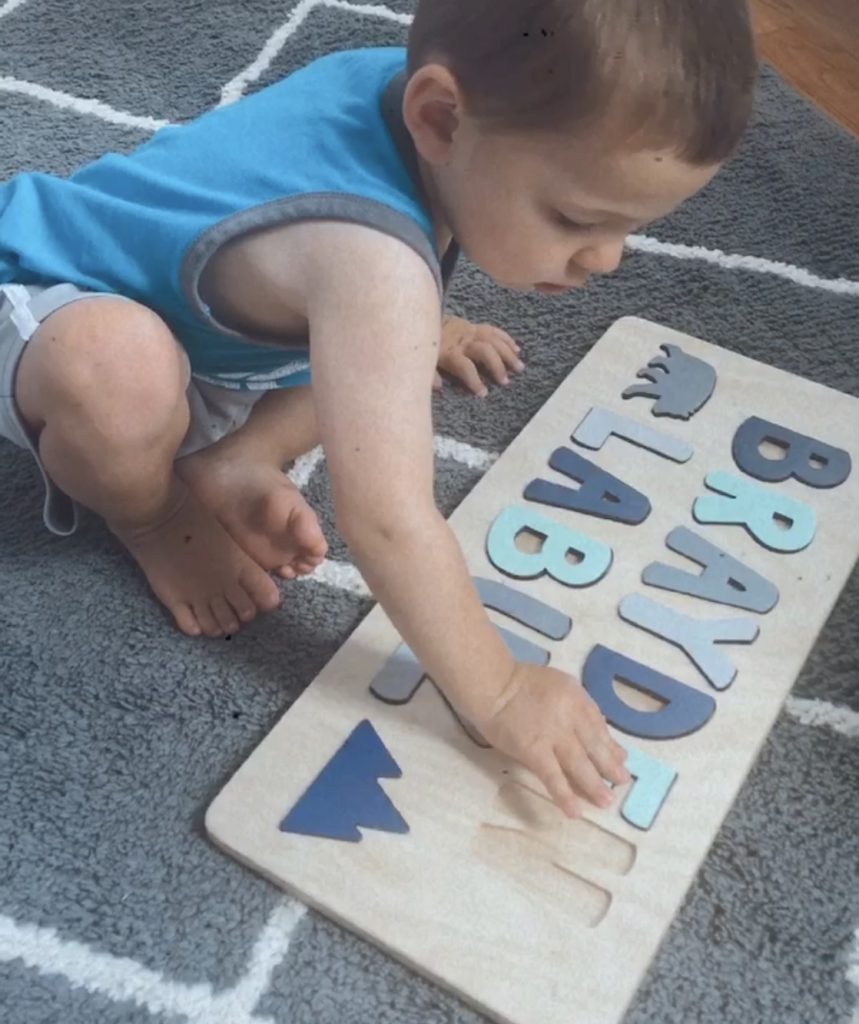
These name puzzles from Bloom Owl are a great way to get your child learning the letters of their name. They’ll love playing with the puzzle as they start to recognize the letters they see all the time.
By far my favorite resource for having your child learning letters and letter sounds is the Leap Frog shows on Netflix. They include Letter Factory, Phonics Farm, and more. If you have Netflix you can access these shows! My 20 month year old was reciting all of the letter sounds because he loves this show so much!
Related Post: Sticker Activity for Learning Letters
8. BUILDING


Building helps to improve your child’s hand-eye coordination and spatial awareness. They’ll be able to use their imagination and creativity to create masterpieces and then knock them all down when they’re done.
This Melissa & Doug Alphabet block set is great for small hands to stack. Two year olds also love Mega Blocks as they are perfect for stacking, putting together, and taking apart. My kids are obsessed with Magnetic Tiles and Bristle Blocks for building too.
These toys and learning activities for two year olds encourage imaginative play and let them problem solve and investigate the world around them. Tell them to build a robot, a tall building, or a table. They’ll love trying to come up with ways to make these items.
9. PUZZLES
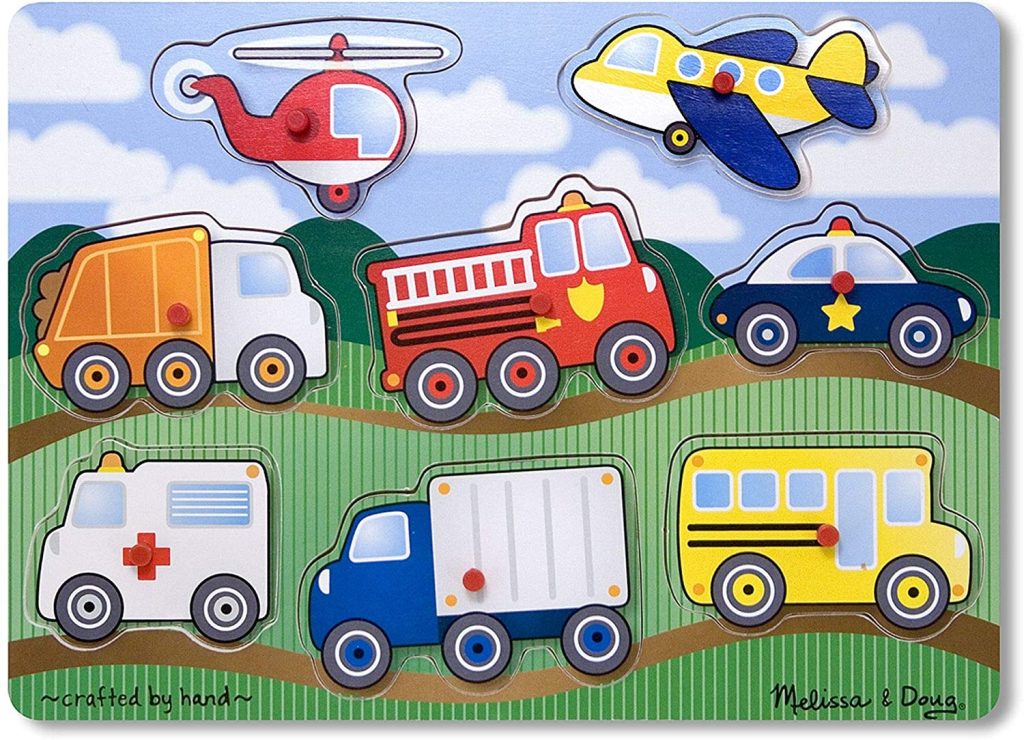
Puzzles are a great activity for fine and visual motor skills (hand-eye coordination). Having to fit a piece into it’s correct spot by turning and manipulating it is great for visual-spatial awareness.
Your 2 year old may still enjoy doing inset puzzles with knobs or pegs, which allow them to easily match shapes and items and fit the pieces in a spot. If they seem to have moved past simple inset puzzles, they may be ready to start with interlocking puzzles.
If you want to try out some more complicated interlocking puzzles try these to start. Also the name puzzles mentioned above are great to also enhance letter learning at the same time.


10. PHYSICAL ACTIVITY AND GETTING OUTSIDE
Two-year-olds are known to be pretty wild so you probably won’t need much coaxing to get them active. However, make sure they’re getting plenty of physical activity to learn new gross motor skills. These include:
- Jumping
- Running
- Climbing
- Pedaling a tricycle or ride-on toy
- Throwing/catching/kicking a ball
The best way to get them active is to give them lots of outdoor time. Take them to playgrounds to climb on the equipment as they offer so many opportunities for enriching gross motor skills. Take them for a walk and point out all the sights you see.
11. MUSIC, DANCE, AND RHYTHM
Children love rhythm and music so get them singing, dancing, and exploring their bodies with music. Put on music for them to dance to, sing along to their favorite songs with a microphone, or make their own music with toy instruments like maracas, xylophone, tamborine, etc.
You can also make musical ‘instruments’ with so many household objects, like shaking pill bottles, banging wooden spoons, or filling plastic Easter eggs or water bottles with uncooked beans or rice.
Songs are also the best way for little ones to learn and memorize new concepts. Therefore, you can sing songs like the ABCs, head, shoulders, knees, and toes, or Old McDonald to learn letters, body parts, and farm animals, respectively.
12. POTTY TRAINING
Around 2 is the typical age that most parents decide to start potty training. Between 2 and 3, many children will be fully capable of using the toilet.
You can start gradually by introducing the potty and have them sit on it during different periods of the day when you know that they usually go.
Be sure to wait until they’re ready and don’t force it on them. You can start slow and steady with gently potty training to get them familiar or dive all in on a 3-day potty training binge.
Here are some great tips on potty training your toddler here.
13. SENSE OF TIME
This is something that may not come until closer to 3 and of course your two year old will not be able to tell time. However you can still teach them a basic sense of how much time is remaining or when time is over.
For example, when you say “5 more minutes left to play until dinner time” or “go brush your teeth in 1 minute,” They still won’t have a true sense of how long these increments of time are, but you can try to make them aware that 1 minute is quick, compared to 10 minutes or 20 minutes.
Before they fully have a sense of time, try setting an audio or visual timer when you need to show them when time is up. For example, when you say clean up in 5 more minutes, set a timer for 5 minutes to ring when it’s time.
We love the Time to Wake clocks for my toddlers. They let them know when it’s time to call for mom or get out of bed by simply turning a different color when it’s almost time to get up or when they should leave their room.
This is a great visual way for them to “see” and understand time.
14. SAFETY
Of course, safety is a crucial lesson to teach your child. This is the age where they will probably have no fear or understanding of dangerous situations. The following practices need to be taught and don’t just come naturally to your little one:
- not running away in public
- not running out into a parking lot
- stranger danger
- staying close to mom or dad
- being cautious when crossing streets
- holding hands when in public or outside
- sun safety: applying sunscreen, wearing hats
Speaking of safety for your little ones, the Whystle App is a great resource for all parents to have that tracks all safety information that’s important to your family. This includes product recalls for toys, food, and more that could promote dangers into your home. Download this app free on your phone and then there’s a free trial for the subscription so you never miss an important safety warning.
15. MANNERS AND RESPECT FOR OTHERS
Understanding how to properly treat others is a valuable trait to instill in your child. This goes for respecting both adults and other children. It’s important to teach your children how to use polite words and actions to show manners.
At this age, they are starting to test their boundaries and explore new ways of getting what they want. Instill rules for respecting others even through times of frustration.
- Saying excuse me when needing someone to move or get their attention
- Patiently waiting for a parent to finish talking to another parent before chiming in
- Saying please and thank you shows consideration and appreciation
- Making eye contact when speaking to others
- Apologizing when you do something wrong
- Share their toys or items that belong to them
- No pushing, hitting, biting, or pulling hair to hurt others in any way
16. STAYING HEALTHY: GOOD HYGIENE AND EATING WELL

Teaching your child to practice good hygiene and healthy eating is great to start young. Build-in their hygiene routine throughout the day and they will become accustomed to this regimen. Eating healthy foods early on to set them off for a healthy diet for the rest of their life. These include:
- eating fruits, vegetables, whole grains, and proteins. Avoid: processed foods, unhealthy snacks, and sweets
- washing hands after meals and potty
- brushing teeth morning and night
- bathing daily
- keeping their clothes and body clean while they eat or play
- covering their mouth when they sneeze or cough
- blowing their nose into a tissue
- wiping their own privates after going potty
Complying with:
- brushing and combing hair
- cutting fingernails and toenails
- cleaning inside ears with a child safety q-tip
Related Post: How to Get Your Picky Toddler to Try New Foods
17. ACTING APPROPRIATELY IN PUBLIC AND UNDERSTANDING “NO”

Toddlers are very ego-centric (only care about themselves). It’s totally normal for them to only think about how things will affect them. This almost always leads to inappropriate behaviors as they learn what behaviors get them what they want.
Don’t always give in to every cry and teach them that sometimes they can’t get everything that they want. Don’t always give them the cookie that they’re begging for or the new toy at the store. If they must get the object that they desire, make them earn it.
Teach your 2-year-old how to act appropriately to avoid tantrums in public. Try putting rules in place when you are out so they know what is expected of them. Always have a way to redirect or distract them when you see a tantrum starting (using something else they are interested in). Lastly, just avoid situations that could set them off.
This is a great article about Tips for Cry-Free Shopping with Your Toddler
18. HAVING A ROUTINE


Your child probably already has some routine in place throughout their day. However, you want to ensure that they are consistently doing what is asked of them so that they could even do it on their own if needed. The more structure that your child has in their day, the more they will start to understand time and a daily schedule.
I love using a routine or responsibility chart (like the blue/green one on the right) so my toddler can have a visual cue of everything that is expected of her. Use one with pictures instead of just words, (like this Mickey Mouse chart), so your toddler actually understands what it’s for.
Here are some examples of day-to-day routines that you can create a specific pattern for:
- Bedtime: Brush teeth, go potty, wash hands, put pajamas on, read a story, go to sleep
- Morning: Go potty, wash hands, brush teeth, get dressed, eat breakfast
- Before naptime
- Pre-dinner wind-down time
- Cleaning time
Related Post: Why Your Child Needs a Daily Routine and How to Make One
19. STAYING ON TASK
A toddler has a very limited attention span (unless of course, they’re watching their favorite television show). It’s only reasonable to ask them to focus on a task for around 4-6 minutes at this age. However, it is important for them to be aware that once they start a task they should finish it to completion.
My daughter loves to grab a puzzle and put in 3 pieces and walk away or sit down and read 2 pages and then walk away.
The goal of teaching your child to stay on task is to complete what they start. Here are some tips:
- While playing with your child, make sure that they complete the entire activity, ie. puzzle or read through the whole book, before they get up and run around.
- If they’re coloring or building a tower, keep them engaged in that one activity for as long as possible before you let them move on to the next.
- During mealtimes make sure they remain seated and finish their meal before getting up and playing.
- Make sure they clean up one activity before moving on to the next
20. BEING A HELPER
Little kids LOVE to help grown-ups. They want to do everything that you’re doing because they’re starting to gain this growing confidence and independence. Invite them to perform tasks that they may not be able to do independently, but that they can help you with.
- Get the mail
- Take the trash out
- Refill the toilet paper roll dispenser
- Help with cooking: mixing, adding ingredients
- Carrying in bags or groceries
- Fill the dog bowl
- Entertain a younger sibling
21. TECHNOLOGY
Technology or screen time should be limited for toddlers to 1 hour a day, but it is important for your child to learn how to use these devices. The fine motor skill of swiping, clicking, and sliding to nagivate through tablets and smart phones are something that your 2 year old can easily learn.
Ipad educational games like ABC Mouse are great to sharpen a lot of the educational skills listen above, as well as practice using a tablet or smart phone. My toddler loves ABC Mouse because of the wide variety of games and fun. She’s learning how to trace letters, numbers, make new sounds and words, etc. They’re giving a FREE 30-day trial now so sign up while you can!
Leapfrog Laptop is also a fun interactive computer that toddlers can easily use and learn on.
Most of these skills can be accomplished at some point while a child is two (24-35 months old), but every child develops at their own pace. This article is not intended to skew your mind into thinking that your child MUST know these concepts.
However, if you are looking for learning activities to do with your child, ways to engage their mind, or knowledge to teach them, these are some great tips. Your child is NOT behind if they can’t adequately do all of these things, but if you are concerned, please speak to your pediatrician.
Have fun teaching your two-year-old and enjoy watching them blossom this year. They’ll be growing and developing before your eyes so don’t blink! Here are some more great learning activity ideas to do with your 2 year old.

